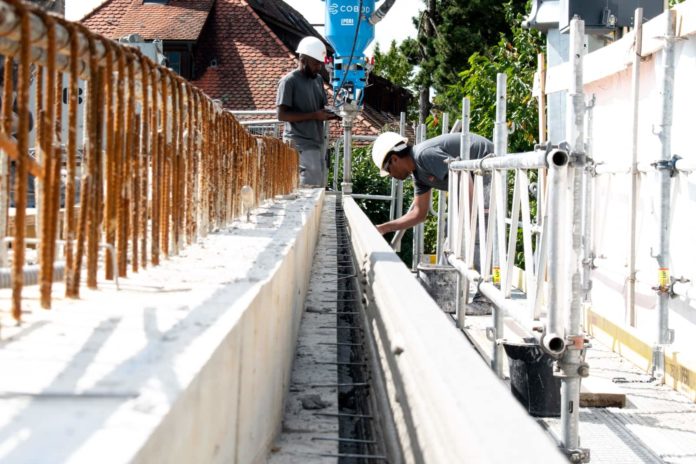When the first 3D printed home has been inaugurated in Germany, Mrs. Ina Scharrenbach, Minister for Construction, Home, Municipal Affairs and Equality of the State of North Rhine Westphalia said it would generate positive pressure in the construction industry, to build using new technologies and exploring new styles.
PERI, the company that built this 3D printed home using a COBOD 3D printer, has taken these words too literally as it recently 3D printed a residential building extension of a family home in Bavaria.
The construction company has given life to an idea of the architectural office BODENSEE ARCHITEKTUR, which imagined a 3D printed floor onto an existing single-family house. Implemented with BALDAUF GEBÄUDEDRUCK, the project is described as a first of its kind, carried out with a construction 3D printer.
“Once again, we are entering new territory here with our 3D construction printing technology,” says Dr. Fabian Meyer-Broetz, Head of PERI’s 3D construction printing activities. “Technologically, the setup of the printer in particular was a new challenge due to the slope of the site. The project in Lindau shows once again how flexible and versatile this new technology is.”
The house, which was built in 1960, is occupied by the planning architect André Baldauf and his family.
“The most important topics of our time are the careful use of our earth and the digitalization of all areas. The building industry has few answers to these so far,” says André Baldauf. “Due to the mix of materials used in our project – of highly CO2-binding Neptune grass insulation, a folding wooden roof and 3D printed load-bearing structure – we were able to construct the building extension in a nearly CO2-neutral way without focusing on just one building material. The walls were planned and 3D printed, and the wooden roof was tied down ready for assembly according to 3D plans. That’s how we plan and build today!”
So how did they proceed?
A press communication explains that the old roof was first removed and a new concrete ceiling was placed on top of the existing structure, onto which the new floor could then be printed. After completion, the new floor will have a floor area of 120 sqm and a height of 3.70 m.
As for the technology, the team at PERI once more, leverages a COBOD machine, the BOD2 especially. As a reminder, the print head moves over three axes on a permanently installed metal frame. Not only does this enable the printer to move in any position but the construction team only needs to calibrate it once.
PERI explains that the BOD2 is certified in such a way that work can also be carried out in the print room during the printing process. Manual work, such as laying empty pipes and connections, can be easily integrated into the printing process in this way. Moreover, with a speed of 1 m/s, the BOD2 can print 1 m² of double-skin wall in around 5 minutes.
Moreover, as far as materials are concerned, the “i.tech 3D” material used for printing was developed by HeidelbergCement specifically for 3D printing. Its properties are adapted to the special requirements of 3D printing with concrete, and it is perfectly compatible with the BOD2.
On September 15th from 03.30 PM – 04.30 PM (CET), PERI’s Fabian Meyer-Broetz will take part in a virtual panel dedicated to the hidden complexities in construction 3D printing. Make sure you register here if you want to listen to the do’s and don’ts in this field of activity.
Remember, you can post job opportunities in the AM Industry on 3D ADEPT Media free of charge or look for a job via our job board. Make sure to follow us on our social networks and subscribe to our weekly newsletter : Facebook, Twitter, LinkedIn & Instagram ! If you want to be featured in the next issue of our digital magazine or if you hear a story that needs to be heard, make sure you send it to contact@3dadept.com






